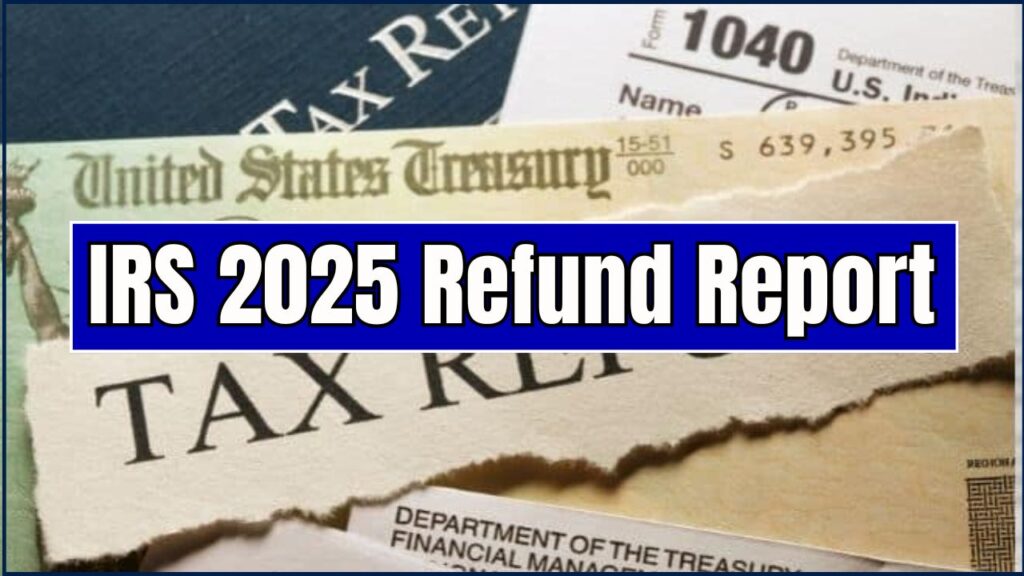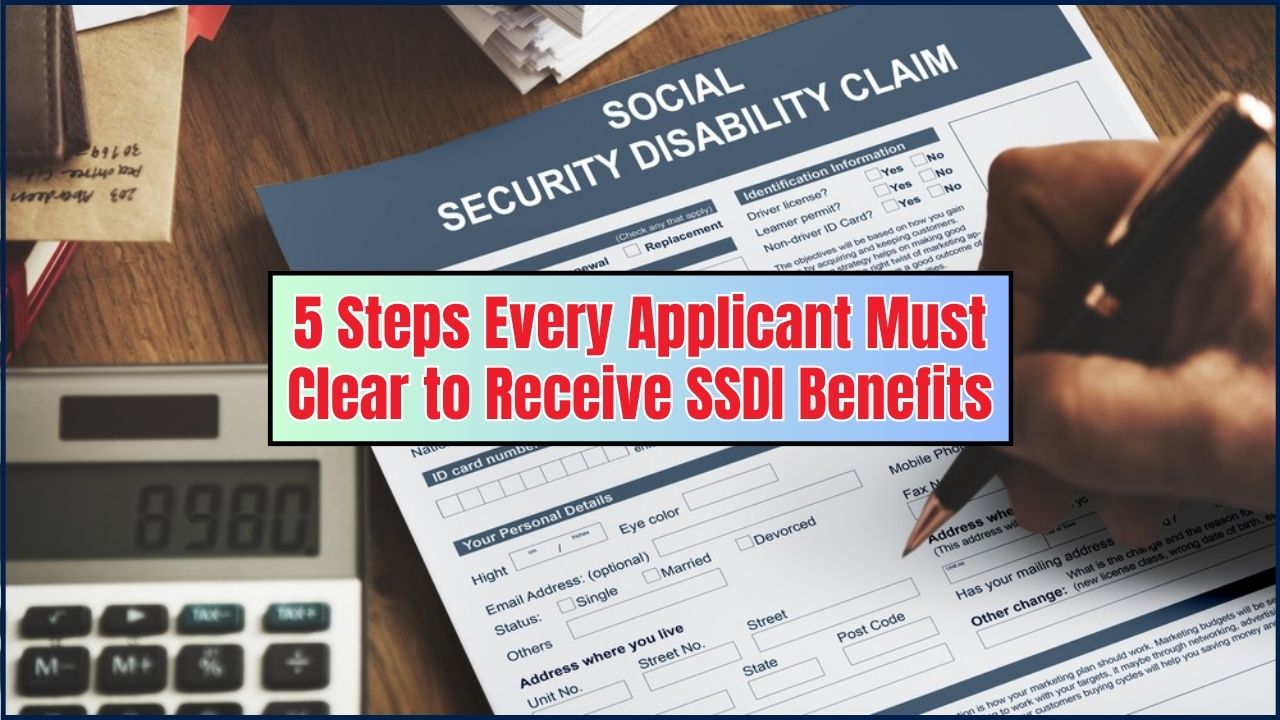If you’ve been refreshing your bank account waiting for that sweet refund, you’re not alone. The IRS 2025 Refund Report has dropped some surprising numbers this year, and they’re higher than a lot of folks expected. According to the Internal Revenue Service (IRS), the average refund in 2025 has climbed past $3,100, with some weeks in the filing season hitting over $3,300 for direct deposit refunds. That’s a big jump compared to what many taxpayers were bracing for.

Now, before you start daydreaming about that beach vacation or finally paying down that credit card, let’s break down what these numbers really mean, why they’re happening, and how you can make the most of your refund. Whether you’re a 10-year-old learning about taxes for the first time (hey, kudos for being ahead of the game!) or a working professional balancing multiple 1099s, this guide has you covered.
IRS 2025 Refund Report
| Key Point | Details |
|---|---|
| Average Refund 2025 | Around $3,116 (IRS as of April 4, 2025) |
| Peak Refund Average | Over $3,382 in February 2025 |
| Direct Deposit Refunds | Averaged between $3,186–$3,436 |
| IRS Official Source | IRS Filing Season Statistics |
| Total Refunds Issued | More than 86 million refunds, totaling over $250 billion |
| Why Higher? | Inflation adjustments, expanded credits, and earlier filing trends |
| Professional Note | Refunds may not always mean “extra money”—they’re often a sign of over-withholding |
The IRS 2025 Refund Report shows Americans are getting larger refunds than expected, averaging more than $3,100 and peaking above $3,300. While it’s tempting to treat your refund as “bonus money,” it’s really just your own money coming back. The smart move? Use it to pay debt, save, or invest for future goals. And next year, consider adjusting your withholdings so you keep more of your cash all year round.
Why Are Refunds Bigger in 2025?
Refunds don’t magically appear out of thin air. They’re the result of how much you paid in taxes versus how much you owed. If you overpaid, Uncle Sam sends you the difference.
So why the bump in 2025?
- Inflation Adjustments: The IRS raised tax brackets and standard deductions to match inflation. Many workers overpaid slightly.
- Expanded Tax Credits: Programs like the Earned Income Tax Credit (EITC) and Child Tax Credit (CTC) gave a boost.
- Early Filing: Millions filed earlier, so averages looked stronger in the first months.
Historical Comparison: How 2025 Stacks Up
To really get why 2025 feels surprising, check this out:
| Year | Average Refund |
|---|---|
| 2021 | ~$2,827 |
| 2022 | ~$3,039 |
| 2023 | ~$2,933 |
| 2024 | ~$3,011 |
| 2025 | ~$3,116 (peaking over $3,382) |
The big takeaway? Refunds have been steadily climbing, but 2025 marks one of the highest peaks in five years.
2024 vs. 2025 Refund Comparison
Here’s a quick look at the average refund amounts over the last two years, highlighting some key differences.
| Feature | 2024 Tax Season (filed in 2025) | 2023 Tax Season (filed in 2024) |
| Average Refund Amount | $XXX (This Year) | $3,172 |
| Notable Tax Changes | New tax bill adjustments to certain credits and deductions. | No major legislative tax changes. |
| Economic Context | Post-inflationary period, with some tax bracket adjustments. | Higher inflation impacting consumer spending and savings. |
| Processing Time | Most e-filed returns within 21 days. | Most e-filed returns within 21 days. |
The Numbers That Matter
Here’s what the IRS reported this year:
- Feb 28, 2025: Refunds peaked at $3,382 (direct deposit ~$3,436)
- March 7, 2025: Average refund $3,324 (direct deposit ~$3,379)
- March 21, 2025: Average refund $3,221 (direct deposit ~$3,284)
- April 4, 2025: Average refund $3,116 (direct deposit ~$3,186)
By late spring, refunds averaged closer to $2,900–$3,000, reported by Kiplinger and SmartAsset.
Real-Life Scenarios: How Families Are Using Refunds
- Single Mom with 2 Kids (CTC Eligible): A $3,200 refund helped her clear medical bills and set up an emergency fund.
- Young Professional in NYC: Used a $2,800 refund to pay down high-interest credit card debt.
- Gig Worker / Freelancer: Invested $3,000 in new equipment to grow side hustles.
Moral of the story? Your refund can either disappear into “fun money” or become a launchpad for financial growth.
What Should You Do With Your Refund?
Here are some smart moves to consider:
1. Pay Down High-Interest Debt
Credit card APRs average 20%+. Paying them down is like earning a guaranteed return.
2. Start or Boost an Emergency Fund
Even $1,000 in savings can cover unexpected car repairs or medical expenses.
3. Invest for Retirement
Open or contribute to an IRA or 401(k). Compound interest is your best friend.
4. Think Big Goals
Buying a home? Starting a business? Your refund could be the seed money.
5. Treat Yourself—Responsibly
Spend 10–15% guilt-free on something you enjoy. Balance is key.
State Refunds: Don’t Forget the Local Angle
Many taxpayers forget they may also qualify for state refunds. For example:
- California & New York: Often have higher refund averages due to higher state taxes.
- Texas & Florida: No state income tax, so refunds are strictly federal.
Check your state’s Department of Revenue website to track refunds.
Refund Safety: Avoid Scams
Refund season is prime time for scammers. Watch out for:
- Phishing Emails pretending to be the IRS.
- Fake Refund Calls demanding “verification fees.”
- Identity Theft targeting your refund directly.
Remember: The IRS never calls, texts, or emails you first. Always start at irs.gov.
Pro Tips for Professionals & Small Business Owners
- Adjust Quarterly Estimates: Freelancers and gig workers should review quarterly payments to avoid overpaying.
- Use Refunds for Business Growth: Equipment, marketing, or software investments can be tax-deductible.
- Track Mileage and Expenses: Using refunds for tools to better track deductions can save money next year.
Professional Insight: Refunds Aren’t “Extra Money”
Big refunds feel good—but they’re a sign you overpaid your taxes. You basically gave the government an interest-free loan.
Want to fix that? Adjust your W-4 form with your employer. Use the IRS Tax Withholding Estimator to keep more money in each paycheck.
FAQs
1. What is the average tax refund in 2025?
About $3,116, peaking at $3,382 earlier in the season.
2. Why are refunds higher this year?
Inflation adjustments and expanded credits boosted numbers.
3. How long does it take to get a refund?
Most arrive within 21 days if filed electronically with direct deposit.
4. Is a big refund good?
Feels good, but it means you overpaid your taxes. Adjust your W-4 to balance it out.







